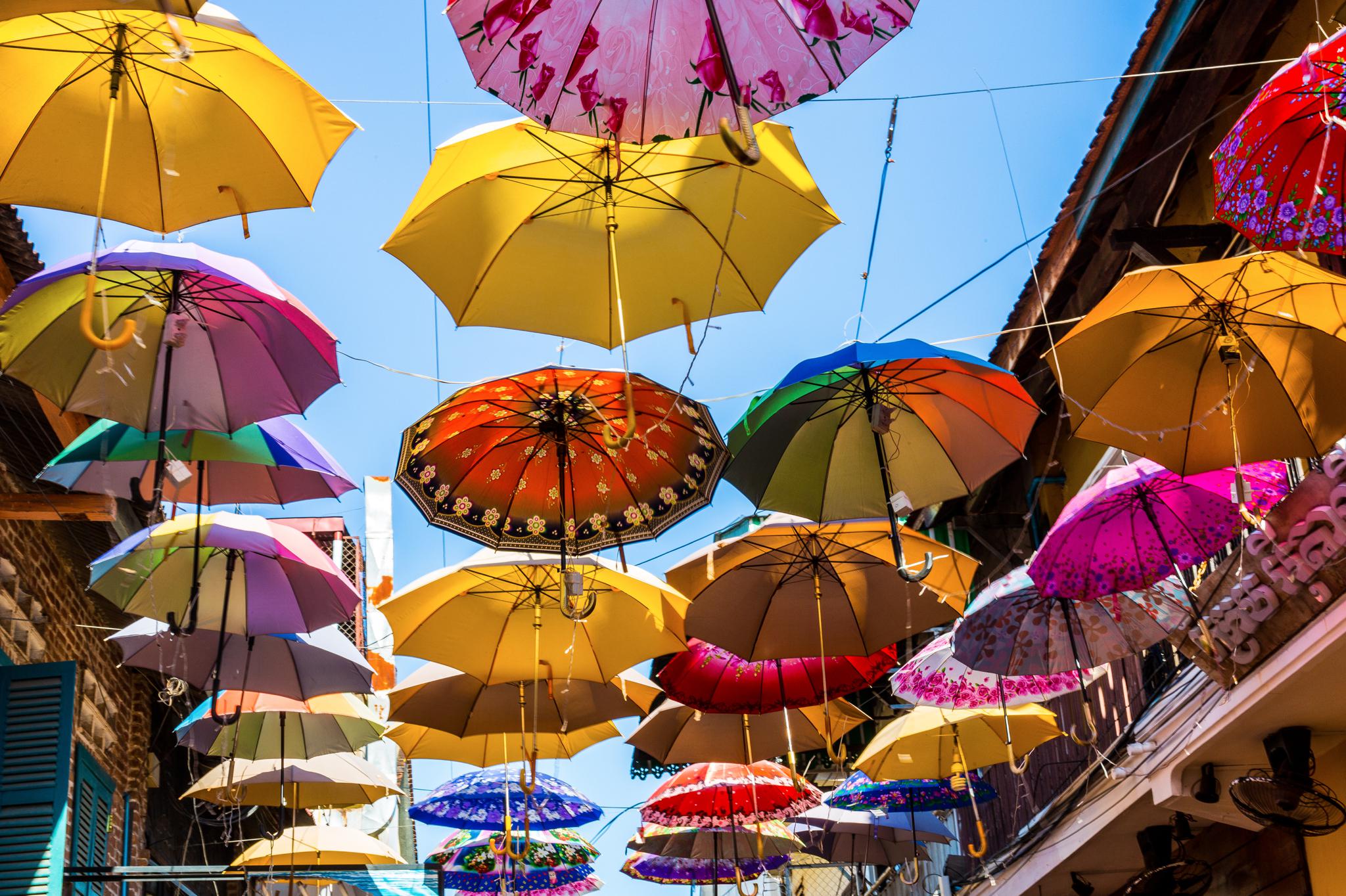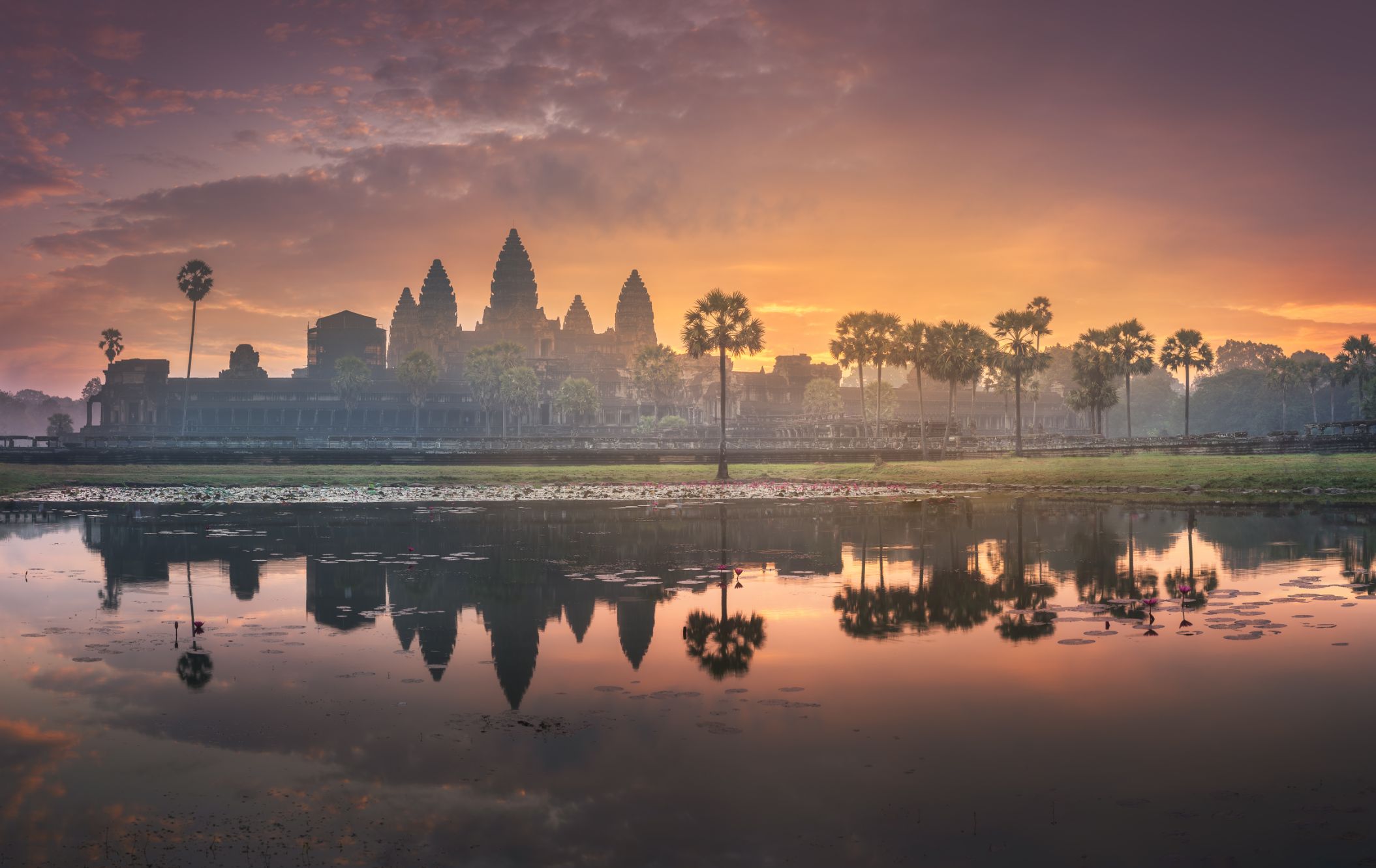Cambodia Art & Culture
From Street Art to Acrobatics: Cambodia’s Artistic Revival

Siem Reap’s creative scene is abuzz and at the heart of the revival is a world-class street art offering

Siem Reap’s creative scene is abuzz and at the heart of the revival is a world-class street art offering
Wealthy socialite and bon viveur, author Somerset Maugham was a consummate luxury traveller. His travelogues are gems of wry urbanity. Not for him the unfailing effusions that mark the lesser writer; if he didn’t think a place worth the effort, he’d tell you. “At Hanoi, I found nothing much to interest me,” he wrote, and Haiphong was “a commercial town and dull”.
But Angkor Wat blew Maugham away. “I have never seen anything in the world more wonderful than the temples of Angkor,” he wrote. What so bewitched him was the artistry evident in Angkor’s every detail. “Capitals, pediments, pilasters, doorways, windows are enriched with carvings of unimaginable variety,” he said. Their authors “had a free hand and with a fury of creation crammed into these narrow limits all the adventures of their impetuous souls.”
When Angkor reached this artistic zenith, it was the capital of a fabulous empire that stretched across Southeast Asia. Then suddenly, mysteriously, Angkor fell, its million souls melted back into the jungle, and the vast monument sank into its 800- year slumber.
Now, just as suddenly, that creative impetuosity has returned. Spurred by Angkor’s rise as a luxury travel destination, the city on its fringes – Siem Reap – has become the locus for a remarkable renaissance in contemporary art. Visitors to Siem Reap can today experience world-class urban and street art, avant-garde circus, internationally acclaimed photography, and cutting-edge modern and colonial-revival architecture at some of the region’s plushest hotels. It’s a virtuous circle powered by the increasingly discerning and cultivated tastes of the visitors Angkor now attracts. And while Maugham spoke of the “immense difficulty” of a trip to Angkor, a happy consequence of all this new emphasis on luxury is that these days… well, it’s no hardship at all.
Former finance professional and art collector Terry McIlkenny was seduced into moving to Siem Reap by the sultry beauty of the country and the agreeable pace of life in the town. McIlkenny’s passion is urban and street art, and when he saw what the new generation of local artists was capable of, he knew he was going to open a gallery.
“Young Cambodians, they’re natural dreamers,” he says. “They want to make art, but there’s pressure from family and peers to do something more obviously lucrative. They don’t know how to make money out of it. So that’s what we want to do – connect them commercially.”
Thanks to his long career as a collector, connections are something McIlkenny has in spades. “When me and my partner Nat opened [art gallery] TRIBE, we asked all our artist friends to come over and jump-start it, and they all said yes – every single one.”
Among the big names to make splashes in Siem Reap have been Carne Griffiths, famous for his portraits of Kylie Minogue and Kate Middleton, among others; Pure Evil; and Fin DAC, whose renditions of mysterious masked women have been featured on Australian stamps.
Now, it would be too starry-eyed to suggest there might be something about Angkor itself, some subliminal or mystical connection to the fabulous monolith smouldering in the jungle that inspires people to make art. And yet…
“When Fin got here, he just wanted to paint,” says McIlkenny. “So we found him a wall on the side of the gallery and he just picked up his brushes and went at it.” The result of this spontaneity is Kandalis, a stern and beautiful Khmer protectress, staring down a narrow urban alley where old ladies sell chicken and coconuts. “Now all kinds of shops and businesses are offering us their walls,” McIlkenny adds.
Fin’s original brief was to paint a mural on the portico of Cambodia’s only free art school in Battambang, Phare Ponleu Selpak. When prints of that work, Anapyabal, were auctioned in Paris, they sold out in three minutes, and Fin donated all proceeds – more than $40,000 – back to the school.
This is what’s so uplifting about Siem Reap’s artistic renaissance; the actors involved are often highly socially engaged and motivated to nurture the talents of Cambodia’s current and future generations. Phare circus is a case in point; all profits head back to Phare Ponleu Selpak, where its performers are trained and which directly and indirectly supports more than 1000 people.
Phare’s shows are acrobatic and pyrotechnic in the manner of Cirque du Soleil’s, and one of Phare’s graduates has joined that august company. But although the performance is not quite so polished and the sets not so grand, Phare, I contend, beats Cirque du Soleil on sincerity and joie de vivre. These are absolutely authentically Cambodian productions, on real Cambodian themes and written by the actors themselves. The show we saw was about the superstition and stigma surrounding disability in one of the most heavily mined countries in the world. It was extremely moving. The joy of personal and physical expression shone in the faces of the young actors as they performed their kinetic stunts and landed their terrifying tricks, and many in the audience had tears in their eyes by the end.
“The youth of Cambodia want to tell their stories,” says Phare’s Craig Dodge. “Until now there’s really been no medium for them to do that.” There could be no better proof of Dodge’s thesis than in photographer Kak Sokphirom, or ‘Phirom’, as he likes to be called. Born in a refugee camp with 10 siblings and an alcoholic father, Phirom did everything and anything to put food on the table: “I worked on construction sites, sorted trash, sold sweets – I used to be called ‘Cake Boy’ – to save up for a tuk-tuk.” For years, Phirom drove his tuk-tuk by day, converting it into a pop-up roadside bar at night, until a few years ago when someone gave him a digital camera to play with.
“It just made me so happy to see the image on the screen – an image I’d just made!” Phirom had found his calling. He was so keen to learn the craft that when he got his first camera, he’d approach strangers looking for pointers. “I’d go up to tourists with expensive-looking cameras and ask them to look at my pictures and tell me how I could improve them.”
Still, Phirom didn’t believe he could make a living out of photography until he met other artists and gallery owners in Siem Reap. “Terry gave me the confidence to try to make this my work,” he says. Now Phirom’s edgy, haunting pictures recording the real lives of Cambodians today have been featured in international magazines. He has exhibited at TRIBE and other galleries, visitors to Siem Reap are buying his works, and was recently tapped to put on a show alongside acclaimed international exhibitors at the prestigious Photo Phnom Penh Festival. Phirom still has his tuktuk, but now uses it mostly for photographic tours.
Phirom’s experience illustrates some of the virtuous circles between artists, tourists and businesses that are bringing Cambodia’s art back home to Angkor. Stories like his make Siem Reap an optimistic and inspiring place to be, and the cultural and artistic attractions that now complement Angkor are so rich, you may want to extend your stay, as I eagerly did. But as Maugham said, “I knew by now that it was the sort of place that, however long one stayed, it would always be a wrench to leave.”
Latest Articles
Don't miss the latest from Luxury Travel
